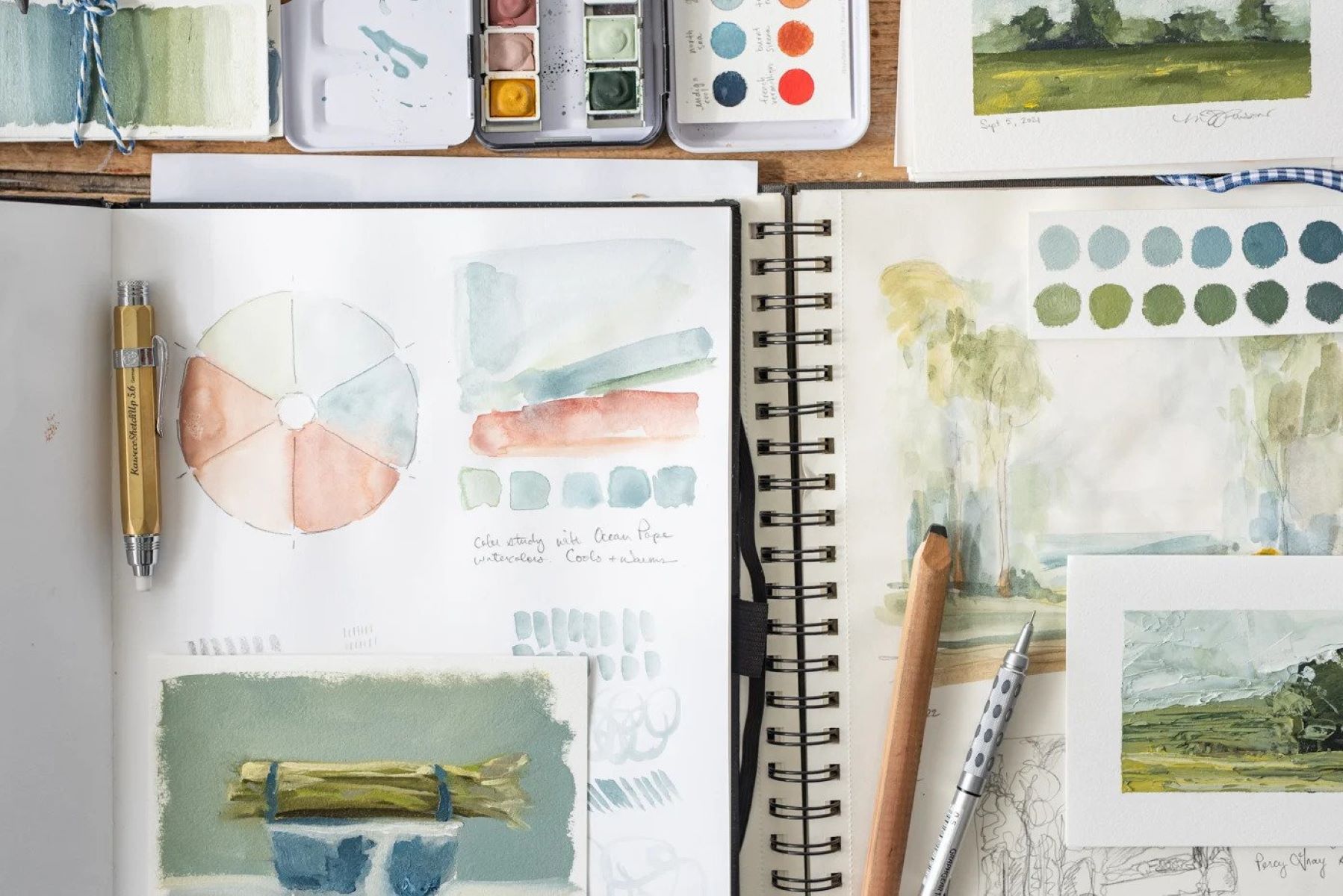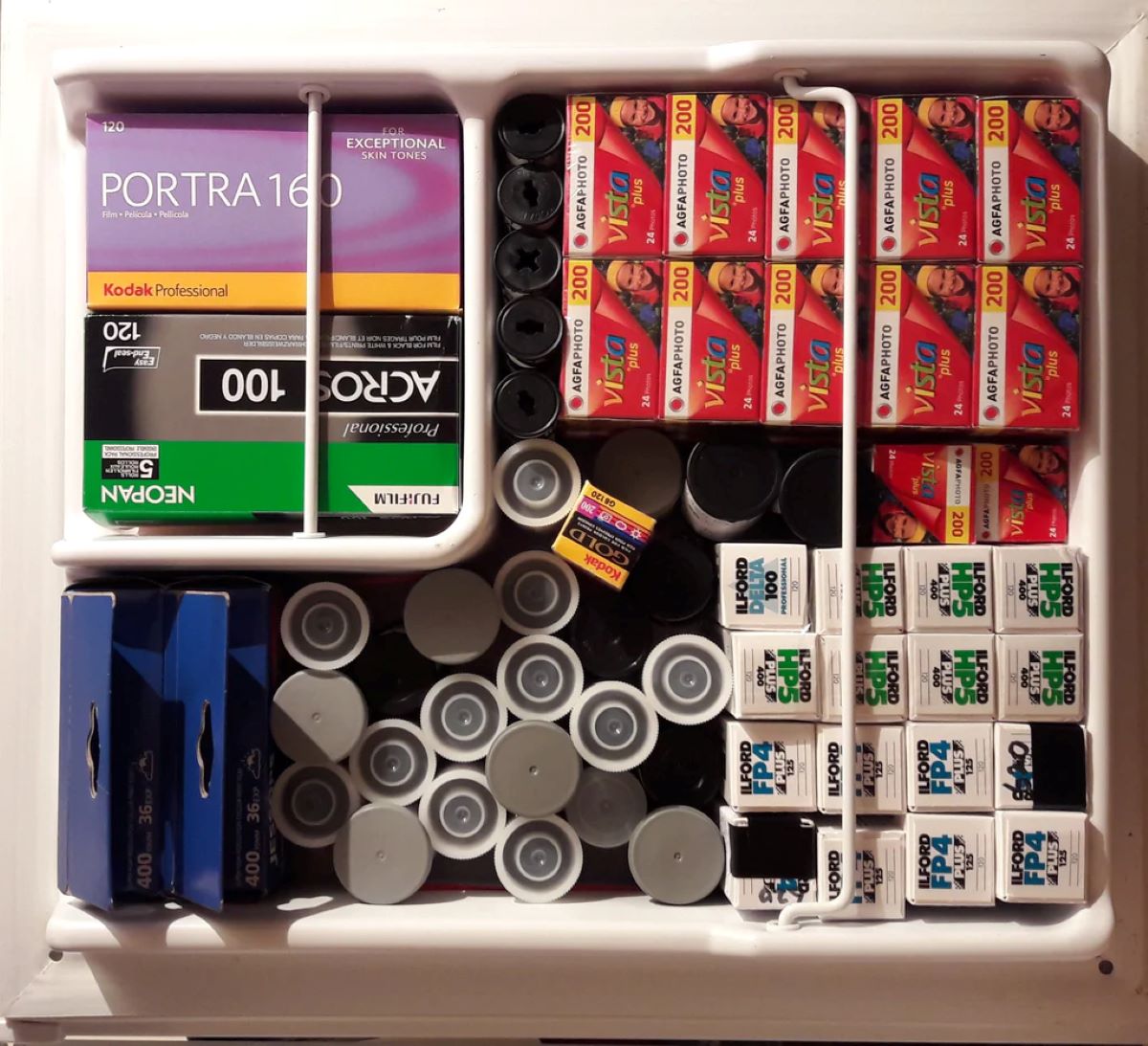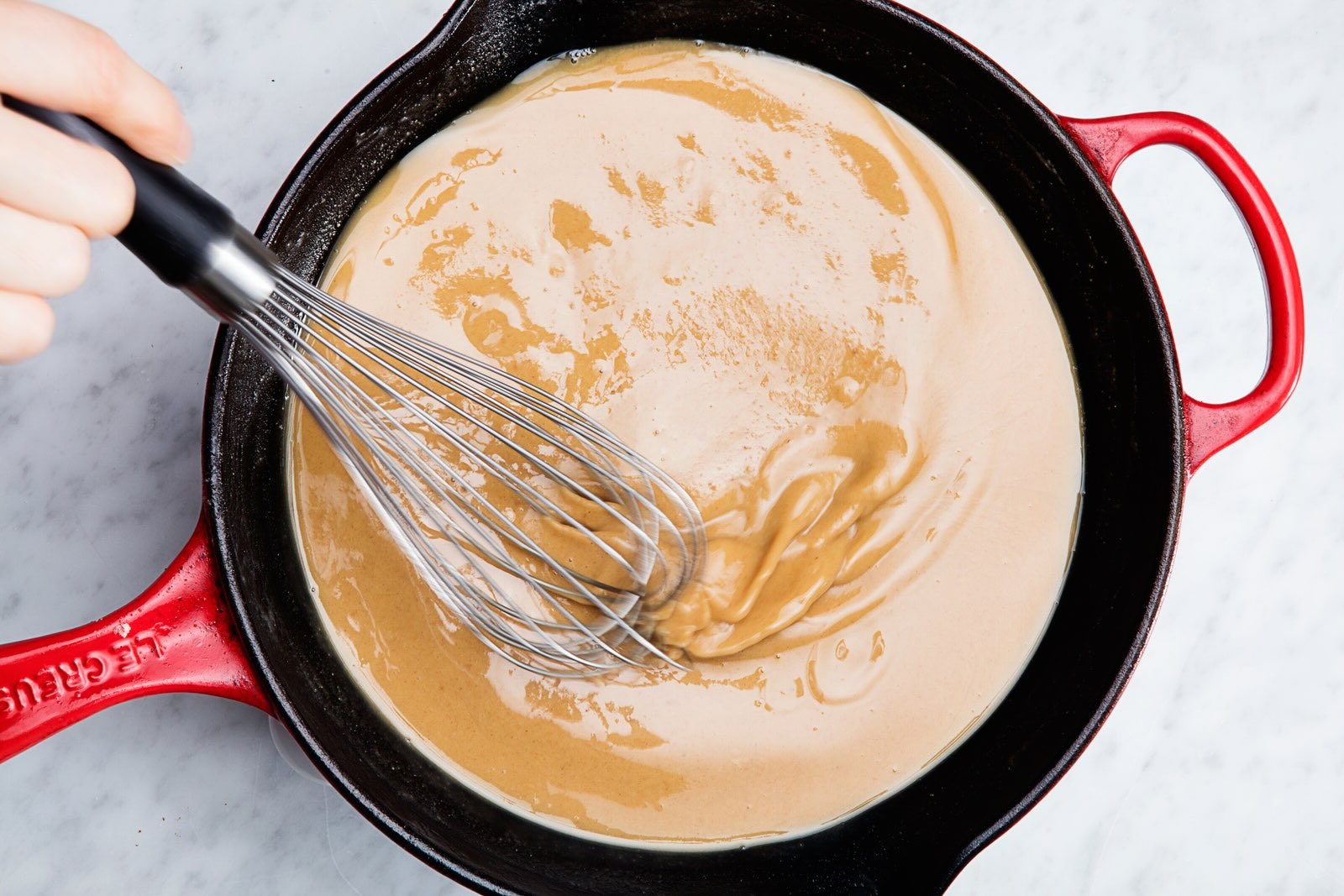

Articles
How To Store Sketchbooks
Modified: January 6, 2024
Learn the best ways to store your sketchbooks and keep them in pristine condition. Discover helpful tips and ideas in this collection of informative articles.
(Many of the links in this article redirect to a specific reviewed product. Your purchase of these products through affiliate links helps to generate commission for Storables.com, at no extra cost. Learn more)
Introduction
Sketchbooks are more than just notebooks filled with doodles and drawings. They are the repositories of our creativity, capturing our ideas, inspirations, and artistic expressions. Whether you are an aspiring artist, a professional illustrator, or a creative hobbyist, storing your sketchbooks properly is essential for preserving your work and ensuring its longevity.
In this article, we will explore the importance of proper sketchbook storage and provide you with practical tips and guidelines to keep your sketchbooks in optimal condition. From choosing the right storage space to protecting your sketchbooks from external factors, we will cover everything you need to know to ensure that your collection of artistic endeavors remains safe and well-preserved.
So, if you’re ready to learn how to store your sketchbooks like a pro, let’s dive in!
Key Takeaways:
- Proper storage of sketchbooks is crucial for preserving artwork, maintaining quality, and facilitating easy access. Factors such as temperature, light exposure, and cleanliness play a vital role in ensuring the longevity of sketchbooks.
- Organizing and sorting sketchbooks by theme, date, and using protective measures are key to maintaining their condition. Regular maintenance, inspection, and digital backups are essential for preserving artistic creations.
Read more: How To Store Basil From Store
Importance of Proper Sketchbook Storage
Proper storage of your sketchbooks is crucial for several reasons. Firstly, it helps to protect your artwork from damage caused by environmental factors such as moisture, sunlight, and dust. Storing them in the right conditions can prevent yellowing, fading, and deterioration of the papers, ensuring that your drawings retain their vibrancy and quality over time.
Secondly, organized storage makes it easier to locate specific sketches or reference materials when needed. By keeping your sketchbooks in an orderly manner, you can save time and frustration by quickly finding the page or artwork you are looking for.
Thirdly, a well-maintained collection of sketchbooks can serve as a valuable resource for future projects and inspiration. By preserving your sketches in good condition, you can revisit them for ideas, techniques, or simply to track your artistic progress over the years.
Lastly, proper storage can help protect your sketchbooks from accidental damage, such as spills, tears, or bending. By keeping them in a designated storage space, you can minimize the risk of mishaps and ensure that your precious artwork remains intact.
Overall, investing time and effort into proper sketchbook storage is well worth it to preserve your artistic creations, maintain their quality, and facilitate easy access whenever you need them. So let’s explore the factors to consider before storing your sketchbooks.
Factors to Consider Before Storing Sketchbooks
Before you begin storing your sketchbooks, there are several important factors to consider to ensure an optimal storage environment. These factors include:
- Temperature and Humidity: Sketchbooks are susceptible to changes in temperature and humidity, which can lead to warping, mold growth, and deterioration of the paper. It’s important to store your sketchbooks in a space with stable temperature and humidity levels. Ideally, the temperature should be between 60-75°F (15-24°C) and the relative humidity should be around 40-50%. Avoid storing them in areas prone to extreme temperature fluctuations or high humidity, such as basements or attics.
- Light Exposure: Exposure to direct sunlight and artificial light can cause the paper and pigments in your sketches to fade over time. When selecting a storage space, choose an area away from direct sunlight or use UV-filtering curtains or shades to protect your sketchbooks from harmful light. If you want to display your sketches, consider using archival-quality frames or protective sleeves that offer UV protection.
- Air Circulation: Proper airflow is essential to prevent the buildup of moisture and mold. Avoid storing sketchbooks in airtight containers or tightly packed shelves. Allow for some space between the sketchbooks to facilitate air circulation. If you live in a humid climate, consider using moisture-absorbing products, such as silica gel packets, to maintain an optimal moisture level.
- Cleanliness and Pest Control: Ensure that the storage area is clean and free from dust, dirt, and pests. Keep the sketchbooks away from food storage areas or places where pests may be present. Regularly dust and clean the storage space to maintain a hygienic environment for your sketchbooks.
- Accessibility: Consider how frequently you need to access your sketchbooks. If you frequently refer to specific sketches or artwork, opt for a storage system that allows easy access and organization, such as shelves, drawers, or portfolios. If you prefer a more decorative approach, consider displaying your sketchbooks on bookshelves or using attractive storage boxes that also provide easy access.
By considering these factors, you can ensure that your sketchbooks are stored in an environment that promotes their preservation and longevity. Next, let’s look at how to choose the right storage space for your sketchbooks.
Choosing the Right Storage Space
When it comes to storing sketchbooks, choosing the right storage space is essential for maintaining their condition and accessibility. Here are some factors to consider when selecting a storage space:
- Avoiding Direct Sunlight: As mentioned earlier, exposure to direct sunlight can cause fading and deterioration of your sketches. Choose a storage space that is away from windows or use UV-blocking curtains or blinds to protect your sketchbooks from harmful light.
- Controlling Temperature and Humidity: Find a storage area with stable temperature and humidity levels. Avoid environments prone to extreme temperature fluctuations or high humidity, as it can damage the paper and pigments in your sketches. Consider using a dehumidifier or humidifier, if necessary, to regulate the humidity levels.
- Considering Storage Containers: Depending on the size and quantity of your sketchbooks, you can opt for various storage containers such as bookshelves, drawers, portfolios, or storage boxes. Make sure the containers are sturdy, clean, and provide adequate protection from dust, moisture, and pests.
- Organizing and Labeling: Keep your sketchbooks organized by labeling them or categorizing them based on themes, dates, or subjects. This will make it easier to find specific sketches when needed. Consider using dividers, folders, or archival-safe sleeves to keep your sketches neatly organized within the storage containers.
- Considering Storage Location: Choose a storage location that is convenient and easily accessible to you. If you prefer having your sketchbooks within arm’s reach, consider keeping them in your studio or art space. If space is limited, you can also make use of under-bed storage or wall-mounted shelving to maximize your storage options.
- Protective Measures: If you live in an area prone to natural disasters like floods or earthquakes, consider using waterproof containers or storing sketchbooks in higher, safer locations. Additionally, consider investing in fireproof storage options to safeguard your sketchbooks from potential fire hazards.
By considering these factors and finding the right storage space for your sketchbooks, you can ensure their preservation, accessibility, and protection from environmental elements. Now that you have chosen a suitable storage space, let’s move on to the next step – preparing your sketchbooks for storage.
Preparing Sketchbooks for Storage
Before you store your sketchbooks, it’s important to take a few steps to ensure they are properly prepared for long-term storage. Here are some essential tips to follow:
- Clean and Dry: Before storing your sketchbooks, make sure they are clean and dry. Use a soft brush or a clean microfiber cloth to gently remove any dust or dirt from the covers and pages. If there are any spills or stains, carefully blot them with a clean, dry cloth. Ensure that the sketchbooks are completely dry before proceeding with storage to prevent mold growth.
- Remove Loose Items: Check your sketchbooks for any loose items such as loose papers, receipts, or scraps. Remove these loose items and store them separately or secure them within the sketchbook if they are important references or additions to your artwork.
- Protect Fragile Pages: If you have sketchbooks with delicate or fragile pages, consider placing acid-free tissue paper or glassine interleaving between pages to prevent them from sticking together or getting damaged during storage. This ensures that your sketches are protected while still allowing airflow.
- Consider Protective Sleeves: For extra protection, consider using archival-quality sleeves for individual sketches or pages. These sleeves can prevent smudging, creasing, or accidental damage while allowing you to view and appreciate your artwork without direct contact.
- Document Your Sketchbooks: Take the time to document and catalog your sketchbooks before storage. This can be as simple as taking photos or creating a digital inventory of the sketches contained in each sketchbook. This documentation will serve as a reference and help you locate specific sketches without having to go through every sketchbook.
- Consider Climate-Controlled Storage: If you have valuable or irreplaceable sketchbooks, consider investing in climate-controlled storage options. These storage units regulate temperature and humidity levels, providing an optimal environment for preserving delicate artwork.
By following these steps and preparing your sketchbooks for storage, you can ensure that your sketches are in the best possible condition and ready for long-term preservation. Next, we will explore some best practices for long-term sketchbook storage.
Read more: How To Store Store-Bought Bread
Best Practices for Long-Term Sketchbook Storage
To ensure the long-term preservation of your sketchbooks, it’s important to follow some best practices for storage. By incorporating these practices, you can maintain the quality and integrity of your artwork over time. Here are some key recommendations:
- Store Vertically: Storing sketchbooks vertically, like books on a shelf, helps prevent pages from warping or getting bent. It also allows for better air circulation, reducing the risk of mold or mildew growth.
- Avoid Overstuffing: Avoid cramming too many sketchbooks or artworks into one storage container. Overstuffing can lead to damage, such as creased pages or binding stress. Allow sufficient space for individual sketchbooks to maintain their original shape and condition.
- Use Acid-Free Materials: When organizing or storing your sketchbooks, opt for acid-free materials, such as acid-free folders, dividers, and sleeves. Acidic materials can cause yellowing, discoloration, and deterioration of the paper over time.
- Regularly Rotate Sketchbooks: If you have a large collection of sketchbooks, consider rotating them periodically. This allows each sketchbook to experience some air circulation and prevents one sketchbook from being stored in the same position for an extended period.
- Monitor and Control Storage Conditions: Regularly monitor the temperature and humidity levels in your storage area. Use a hydrometer to measure humidity and a thermometer to track temperature. Ideally, aim for stable conditions with moderate temperature and humidity levels to prevent potential damage to your sketchbooks.
- Inspect and Dust: Regularly inspect your sketchbooks for any signs of damage or pests. Dust them off gently with a soft brush or microfiber cloth to remove dust and debris that may have accumulated on the covers or pages.
- Avoid Laminating: While it may seem like a good idea to laminate your sketches for protection, it’s generally not recommended. Lamination can lead to a loss of texture and the inability to make any future modifications or additions to your artwork.
- Keep Away from Potential Hazards: It’s important to keep your sketchbooks away from potential hazards such as water sources, direct heat, sharp objects, and chemicals. Store them in a secure location where they won’t be accidentally damaged.
- Consider Digital Backups: In addition to physical storage, consider creating digital backups of your sketches. Scan or photograph your artwork and store them in a secure digital format to have an additional layer of protection and accessibility.
By following these best practices, you can ensure that your sketchbooks remain well-preserved and protected for years to come. Now that we’ve covered the storage practices, let’s move on to organizing and sorting your sketchbooks.
Store sketchbooks in a cool, dry place away from direct sunlight to prevent fading and warping. Consider using a plastic sleeve or protective cover to keep them safe from spills and damage.
Organizing and Sorting Sketchbooks
Organizing and sorting your sketchbooks can greatly enhance accessibility and productivity. It allows you to quickly locate specific sketches or reference materials, saving you valuable time and energy. Here are some tips for effectively organizing and sorting your sketchbooks:
- Categorize by Theme or Subject: One way to organize your sketchbooks is by categorizing them based on themes or subjects. For example, you can have separate sketchbooks for landscapes, portraits, still life, or specific projects. This approach makes it easier to find specific sketches based on the subject matter.
- Sort by Date or Chronological Order: Sorting your sketchbooks by date or chronologically can provide a visual timeline of your artistic progression. It allows you to see how your style and skills have evolved over time and helps you track your creative journey.
- Label and Index: Labeling your sketchbooks and creating an index can be immensely helpful for quick reference. Assign each sketchbook a unique name or number and maintain an index or catalog of the contents. This makes it easier to find specific sketches without flipping through every sketchbook.
- Use Dividers or Tabs: Consider using dividers or tabs to separate different sections or chapters within a sketchbook. This helps you easily navigate and locate specific sketches within the sketchbook, especially if you have a mix of different subjects or projects in one sketchbook.
- Create a Digital Archive: If you want to take your organization a step further, consider creating a digital archive of your sketches. Scan or photograph your sketches and create folder systems on your computer or cloud storage to organize them digitally. This allows for easy searching and backup of your artwork.
- Display and Showcase: If you have a collection of sketchbooks that you’re proud of, consider displaying them on bookshelves or using display stands. This not only adds a decorative touch to your space but also serves as a source of inspiration and a conversation starter for visitors.
- Consider Digital Sketchbooks: For digital artists, organizing and sorting sketchbooks can be done virtually using digital sketchbook applications or software. These applications allow you to create separate folders or notebooks to organize your digital sketches based on themes, dates, or projects.
By implementing these organizing and sorting strategies, you can turn your collection of sketchbooks into an efficient and easily navigable resource. Now, let’s move on to the next topic – protecting your sketchbooks from external factors.
Protecting Sketchbooks from External Factors
Ensuring the protection of your sketchbooks from external factors is crucial for their longevity. Here are some measures you can take to safeguard your sketchbooks:
- Use Protective Covers: Consider using protective covers for your sketchbooks to shield them from dust, dirt, and accidental spills. Opt for covers made of durable materials that provide an extra layer of protection without compromising accessibility or functionality.
- Handle with Clean Hands: Always handle your sketchbooks with clean hands to avoid transferring oils, dirt, or moisture onto the pages. Oily or dirty hands can cause smudging or staining, which can be challenging to remove without damaging the artwork.
- Avoid Excessive Handling: Minimize the frequency of handling your sketchbooks, especially if you have delicate or fragile artwork. Excessive handling can lead to wear and tear, as well as increase the risk of accidental damage or bending of pages.
- Store Away from Liquids: Keep your sketchbooks away from liquids to prevent water damage. Avoid placing drinks or water sources near your storage area, and be cautious when using watercolors or other wet mediums near your sketchbooks.
- Protect from Extreme Temperatures: Extreme temperatures can damage your sketchbooks. Avoid exposing them to direct heat sources, such as radiators or heaters, as well as extreme cold, such as in a freezer. Rapid temperature changes can cause warping or cracking of the paper.
- Prevent Insect Infestations: Protect your sketchbooks from potential insect infestations by keeping them in a clean and pest-free environment. Use mothballs or natural pest repellents to deter insects, but make sure they are not in direct contact with your sketchbooks.
- Mitigate Acidic Exposure: Avoid storing your sketchbooks near materials that produce acidic fumes, such as certain types of wood or cardboard. Acidic exposure can lead to paper deterioration and discoloration over time.
- Be Mindful of Air Pollution: If you live in an area with high air pollution or near industrial zones, consider using air purifiers or storing your sketchbooks in acid-free containers to protect them from the effects of pollution.
- Consider Pest-Proof Storage: If you live in an area prone to pests, such as mice or insects, consider using pest-proof storage options. Look for airtight containers or sealable plastic bags to prevent any unwanted visitors from damaging your sketchbooks.
By taking these protective measures, you can ensure that your sketchbooks are shielded from external factors that can potentially harm your artwork. Now, let’s move on to the importance of regular maintenance and inspection.
Regular Maintenance and Inspection
Regular maintenance and inspection of your sketchbooks are essential to ensure their long-term preservation and catch any potential issues early on. Here are some important practices to incorporate into your routine:
- Inspect for Damage: Regularly inspect your sketchbooks for any signs of damage, such as tears, loose bindings, or water stains. Catching these issues early can help prevent further damage and allow you to take appropriate action to restore or repair the affected sketchbook.
- Address Damaged Sketchbooks: If you notice any damage, it’s important to address it promptly. Depending on the severity of the damage, you may be able to repair it yourself using archival-quality tapes or adhesives. For extensive or valuable damage, consider consulting a professional book conservator for proper restoration.
- Clean as Needed: Regularly clean your sketchbooks to remove any dust or debris that may have accumulated on the covers or pages. Use a soft brush or microfiber cloth to gently wipe away the dirt. Avoid using cleaning solutions unless recommended by a professional conservator.
- Reinforce Binding: If you have sketchbooks with loose bindings, consider reinforcing them with bookbinding glue or tape. This prevents pages from falling out and adds stability to the sketchbook’s structure.
- Rotate Usage: If you have multiple sketchbooks in your collection, consider rotating their usage. This helps to distribute the wear and tear more evenly among your sketchbooks and prevents one sketchbook from deteriorating faster than others.
- Protect against Mold: Moisture can lead to mold growth, which can severely damage your sketchbooks. Regularly inspect your storage area for signs of mold, such as a musty smell or visible patches. If you discover mold growth, isolate the affected sketchbooks immediately and consult a professional conservator for guidance on safe mold removal.
- Monitor Storage Environment: Continuously monitor the conditions of your storage area, including temperature and humidity levels. Make adjustments as necessary to maintain an optimal environment for your sketchbooks. Utilize hygrometers and thermometers to track the conditions accurately.
- Document Changes and Progress: As an artist, it can be beneficial to document the changes and progress of your sketches over time. Take photographs or make notes regarding specific details or techniques used. This documentation can serve as a valuable reference and source of inspiration.
- Backup Digital Copies: In addition to physical preservation, consider creating digital backups of your sketches. Save digital copies of your artwork on external hard drives or cloud storage platforms. This provides an extra layer of protection and ensures that your sketches are not lost in the event of physical damage.
By incorporating regular maintenance and inspection into your routine, you can proactively address any issues and maintain the overall condition of your sketchbooks. Now, let’s discuss how to revive and restore damaged sketchbooks.
Read more: How To Store Basil From Grocery Store
Reviving and Restoring Damaged Sketchbooks
Accidents and damages can occur to your sketchbooks, but don’t worry, there are ways to revive and restore them. Depending on the extent of the damage, you may be able to salvage your precious artwork. Here are some tips for reviving and restoring damaged sketchbooks:
- Treating Water Damage: If your sketchbook has been exposed to water or moisture, act quickly to dry it. Carefully separate the wet pages to prevent them from sticking together and lay them flat in a well-ventilated area. Use blotting paper or clean, absorbent cloths to soak up excess moisture. Avoid using direct heat sources like hairdryers, as they can cause the paper to warp. Allow the sketchbook to air-dry completely before closing it.
- Repairing Tears or Loose Pages: If you have tears or loose pages, you can restore them with archival-quality tapes or adhesives. Use acid-free and reversible tapes to mend tears without damaging the paper. For loose pages, apply a minimal amount of adhesive along the edge and carefully reattach them. Exercise caution to avoid applying excessive glue, which might hinder future use of the sketchbook.
- Dealing with Graffiti or Ink Bleeds: If you have accidental graffiti or ink bleeds on your sketches, it can be disheartening, but there are ways to minimize the damage. Use a kneaded eraser to gently lift off any graphite or pencil marks. For ink bleeds, carefully blot the affected area with a clean cloth or paper towel. If the ink stain is severe, consult a professional conservator for expert advice.
- Removing Adhesive Residue: If you have residual adhesive from old tape or labels, use a small amount of adhesive remover or rubbing alcohol on a cotton swab or soft cloth to gently dissolve the residue. Be cautious not to scrub or apply excessive pressure that could damage the paper.
- Consulting a Professional: For extensive or valuable sketchbooks with severe damage, it’s best to consult a professional book conservator or art restoration specialist. They have the expertise and specialized tools to assess the damage and perform delicate restoration procedures. Professional assistance ensures that your sketchbooks are restored in the safest and most effective way possible.
Remember that every restoration process should be approached with care and delicacy. If you’re uncertain about any restoration techniques, seek guidance from professionals to avoid causing further damage to your sketches.
By following these methods and seeking professional help if necessary, you can revive and restore damaged sketchbooks, preserving your artistic creations for years to come.
Now that you have gained insights into reviving and restoring damaged sketchbooks, let’s conclude this article.
Conclusion
Proper storage and care are essential to ensure the longevity and preservation of your sketchbooks. By implementing the strategies and practices discussed in this article, you can protect your artistic creations and maintain their quality for years to come.
We started by highlighting the importance of proper sketchbook storage, emphasizing the need to protect your artwork from environmental factors and ensure easy accessibility. We discussed the factors to consider before storing your sketchbooks, including temperature, humidity, light exposure, and air circulation.
Furthermore, we explored how to choose the right storage space and prepare your sketchbooks for storage. We covered the best practices for long-term storage, such as storing vertically, avoiding overstuffing, and using acid-free materials.
We then delved into organizing and sorting your sketchbooks, discussing categorization by theme or subject, sorting by date, and utilizing dividers and labels for easy navigation. We also highlighted the importance of protecting your sketchbooks from external factors, such as liquids, extreme temperatures, pests, and air pollution.
Additionally, we emphasized the need for regular maintenance and inspection to catch any damage early on, clean your sketchbooks, and address issues promptly. We also provided tips for reviving and restoring damaged sketchbooks, encouraging caution and professional assistance when necessary.
Remember, your sketchbooks are not just a collection of drawings but a reflection of your artistic journey. Taking proper care of them ensures that your creative expressions are preserved for your own enjoyment and inspiration, as well as for future generations to appreciate.
So, apply these guidelines, create a safe and organized storage space, and regularly maintain and inspect your sketchbooks. With these practices in place, you can safeguard your artistic accomplishments and cherish your sketchbooks for years to come.
Frequently Asked Questions about How To Store Sketchbooks
Was this page helpful?
At Storables.com, we guarantee accurate and reliable information. Our content, validated by Expert Board Contributors, is crafted following stringent Editorial Policies. We're committed to providing you with well-researched, expert-backed insights for all your informational needs.














0 thoughts on “How To Store Sketchbooks”